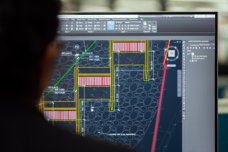Modern cities have many needs in terms of budgeting and investment planning. Some of these needs are traditional, others are more contemporary, such as new challenges in education, investments required for digitalization and infrastructure, and increasing costs for better healthcare. Besides needs that are particular to a city, there are needs that all cities share, such as those stemming from the United Nations’ 2030 Agenda for Sustainable Development. Researchers from the University of Twente, Netherlands, have been investigating if these city needs could be served using digital twin (DT) techniques.
City planning
In general, cities are rich in terms of property owned, but this property tends to be tied up in infrastructure and buildings. Digital twins technologies can play a key role in increasing the usability value of these assets. DT can also help to improve the overall planning of a city, e.g. by integrating functions further (such as working, sleeping, services, and education). This is always a good thing, because multi-functional city districts offer more possibilities and a better quality of life for the citizens.
Ecosystem management
To address the complexity of running a modern city, an increasing number of city councils, like Espoo in Finland, choose the CaaS (city as a service) model. In this type of model, services are provided by the entire city community, not just the official city organization. The city becomes a facilitator and a platform in enabling the entire civil society – including businesses, universities, NGOs and citizens – to find solutions for the existing challenges. The researchers think that DT techniques should fulfil their part in managing these ecosystems.
The human factor
When it comes to city planning and development, digitalization is still viewed as an IT item owned by IT people. There's a need for IT to be integrated into common tools. This type of integration would promote joint planning between different functions. The researchers argue that city DTs can take this role, provided they are useful for any user – including people who are neither digital natives nor IT-oriented. Only a human-factor approach will enable city DTs to effectively support decision-making and ecosystem management.
Back-end and front-end
City DTs are derived from general principles in building information modelling (BIM) techniques and geoinformation systems (GIS). Despite the commonalities, the current DTs for different city applications can be technically very different, because they are designed to serve different specific objectives. There's a need for all information to be gathered in a back-end city DT, with every single front-end interface offering a limited but meaningful representation of the DT for a specific application.
Automated updates
City planning decisions should always be made with the very latest information. That’s why updating DTs is important. This is where artificial intelligence (AI) can play a part, by transforming newly captured data into information that's meaningful for the back-end DT and the applications it serves.
Conclusion
While subscribing to the need for further digitalization in general, the researchers conclude that the focus in DTs must change from IT-centric to human-centric. They argue that psychological aspects are particularly important. For instance, hard data supporting real-estate pricing only partly explains the reason behind the pricing. DT techniques should be developed to include the information that is missing.
This article is a teaser of a paper entitled Can digital twin techniques serve city needs? European cities face sustainability challenges and more.






